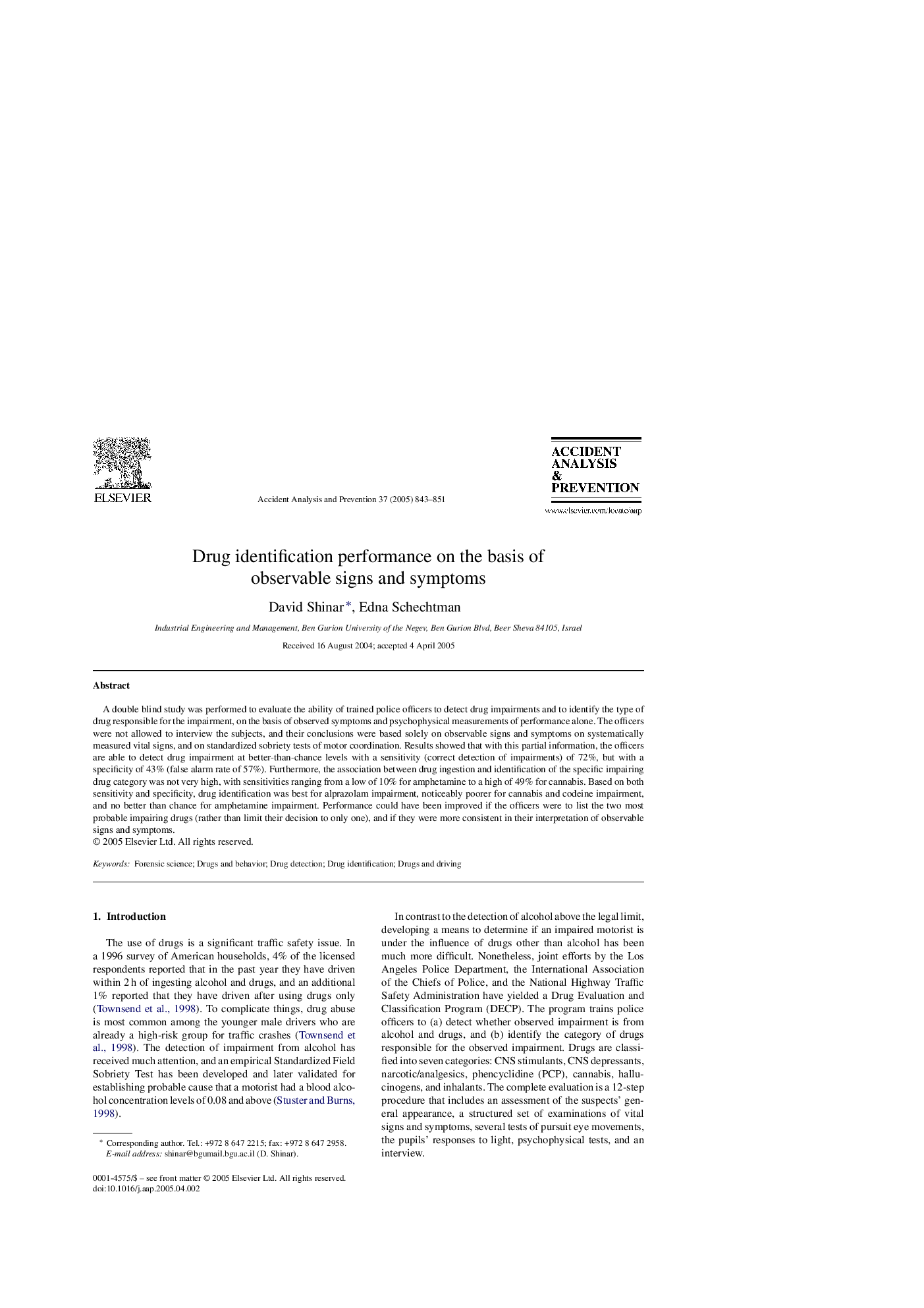| Article ID | Journal | Published Year | Pages | File Type |
|---|---|---|---|---|
| 10371768 | Accident Analysis & Prevention | 2005 | 9 Pages |
Abstract
A double blind study was performed to evaluate the ability of trained police officers to detect drug impairments and to identify the type of drug responsible for the impairment, on the basis of observed symptoms and psychophysical measurements of performance alone. The officers were not allowed to interview the subjects, and their conclusions were based solely on observable signs and symptoms on systematically measured vital signs, and on standardized sobriety tests of motor coordination. Results showed that with this partial information, the officers are able to detect drug impairment at better-than-chance levels with a sensitivity (correct detection of impairments) of 72%, but with a specificity of 43% (false alarm rate of 57%). Furthermore, the association between drug ingestion and identification of the specific impairing drug category was not very high, with sensitivities ranging from a low of 10% for amphetamine to a high of 49% for cannabis. Based on both sensitivity and specificity, drug identification was best for alprazolam impairment, noticeably poorer for cannabis and codeine impairment, and no better than chance for amphetamine impairment. Performance could have been improved if the officers were to list the two most probable impairing drugs (rather than limit their decision to only one), and if they were more consistent in their interpretation of observable signs and symptoms.
Related Topics
Physical Sciences and Engineering
Chemical Engineering
Chemical Health and Safety
Authors
David Shinar, Edna Schechtman,
